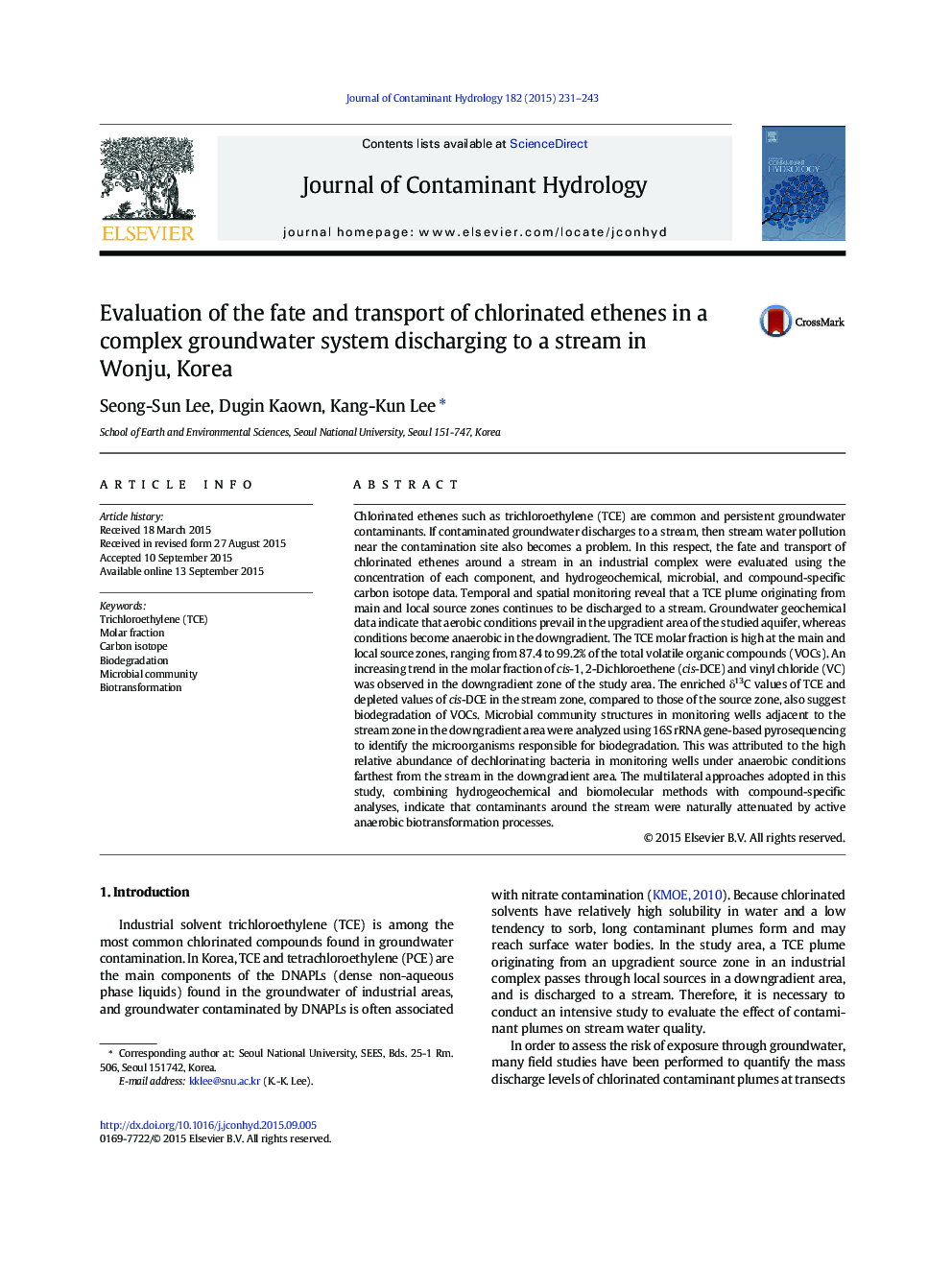| کد مقاله | کد نشریه | سال انتشار | مقاله انگلیسی | نسخه تمام متن |
|---|---|---|---|---|
| 6386441 | 1627028 | 2015 | 13 صفحه PDF | دانلود رایگان |
- Fate and transport of chlorinated ethenes in a locally complex aquifer system around a gaining stream were evaluated.
- Hydrogeochemical, microbial, and compound-specific carbon isotope data were used for the evaluation.
- TCE plumes were naturally attenuated by active aerobic and anaerobic dechlorination and no adverse effects on the streamwater quality were observed.
Chlorinated ethenes such as trichloroethylene (TCE) are common and persistent groundwater contaminants. If contaminated groundwater discharges to a stream, then stream water pollution near the contamination site also becomes a problem. In this respect, the fate and transport of chlorinated ethenes around a stream in an industrial complex were evaluated using the concentration of each component, and hydrogeochemical, microbial, and compound-specific carbon isotope data. Temporal and spatial monitoring reveal that a TCE plume originating from main and local source zones continues to be discharged to a stream. Groundwater geochemical data indicate that aerobic conditions prevail in the upgradient area of the studied aquifer, whereas conditions become anaerobic in the downgradient. The TCE molar fraction is high at the main and local source zones, ranging from 87.4 to 99.2% of the total volatile organic compounds (VOCs). An increasing trend in the molar fraction of cis-1, 2-Dichloroethene (cis-DCE) and vinyl chloride (VC) was observed in the downgradient zone of the study area. The enriched δ13C values of TCE and depleted values of cis-DCE in the stream zone, compared to those of the source zone, also suggest biodegradation of VOCs. Microbial community structures in monitoring wells adjacent to the stream zone in the downgradient area were analyzed using 16S rRNA gene-based pyrosequencing to identify the microorganisms responsible for biodegradation. This was attributed to the high relative abundance of dechlorinating bacteria in monitoring wells under anaerobic conditions farthest from the stream in the downgradient area. The multilateral approaches adopted in this study, combining hydrogeochemical and biomolecular methods with compound-specific analyses, indicate that contaminants around the stream were naturally attenuated by active anaerobic biotransformation processes.
Journal: Journal of Contaminant Hydrology - Volume 182, November 2015, Pages 231-243
